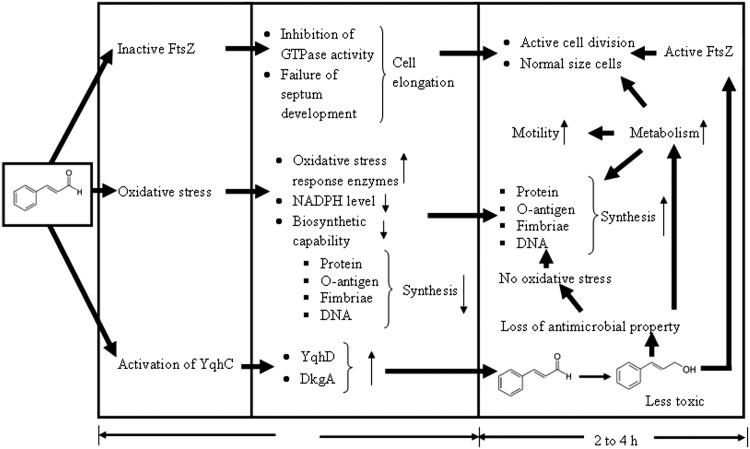Fig 4.
Model showing response of E. coli O157:H7 to cinnamaldehyde exposure. As cinnamaldehyde is hydrophobic, it dissolves/diffuses through the cytoplasmic membrane to the cytoplasm (12). There, it inactivates FtsZ by attaching via its carbonyl aldehyde group (43) and subsequently causes cell elongation. The aldehyde group also causes oxidative stress and induces overexpression of oxidative stress response enzymes. These enzymes utilize cellular NADPH for their activity, which leads to depletion of NADPH levels and decreased biosynthetic capability, eventually inhibiting cell multiplication. The protein YqhC senses toxic aldehydes/cinnamaldehyde and induces expression of alcohol dehydrogenase (YqhD) and aldehyde reductase (DkgA) (26, 58–60). These enzymes convert cinnamaldehyde to the less toxic cinnamic alcohol. Loss of the aldehyde group reverses the inhibition of FtsZ as well as oxidative stress. Elongated cells reverse to normal length; cells become metabolically active and motility is restored.

